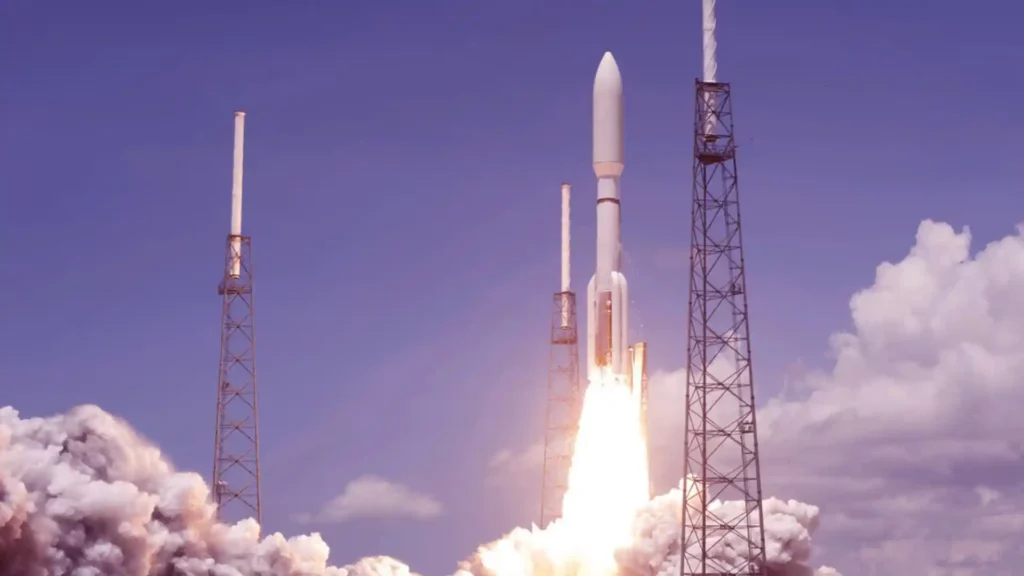The first two Amazon prototype satellites are scheduled to crash into Earth’s atmosphere, ending their lives according to a retirement-by-fire plan. Amazon’s next task is to construct and deploy thousands of additional satellites.
The massive cloud computing and retail company based in Seattle is investing more than $10 billion to build what it believes will be a successful business offering connectivity from orbit. It is a company that, along with SpaceX‘s Starlink, has many of the same founding leaders and a similar core business plan: launch thousands of satellites into space and offer beamed-down internet service globally.
Although Elon Musk claims to have about 6,000 satellites in orbit and a consistent supply of SpaceX rockets to launch more, Amazon‘s Project Kuiper is still in the early stages of evolving from an R&D facility to a potential aerospace manufacturer. It also depends on the US rocket industry, which, Musk excepted, has had difficulty lately producing and launching rockets on schedule.
The Kuiper brass is taking a gamble that by sending more data through each vehicle, their satellites can make up for Starlink’s loss. They have further advantages over Musk‘s competing group. Hundreds of millions of people are familiar with the brand Amazon, and millions of businesses currently use the cloud computing services provided by Amazon Web Services for corporate technological needs.
Construction workers were still remodeling the old Nintendo warehouse that would serve as the foundation for Amazon’s full-scale manufacturing lines in the Kirkland, Washington, suburb of Seattle, when the company began building its first production satellites late last year. Thus, at Amazon’s research center in neighboring Redmond, which was redesigned to house that activity, work on the first manufacturing satellites started.
The business announced earlier this month that it is now able to increase output at its Kirkland site when it comes online. Documents pertaining to permits describe the extent of the work required to get there. In addition to a maintenance and machine shop, a room for acoustic and vibration testing, parts storage, and office space, Amazon built up assembly lines for solar arrays and other components.
Four towering tanks have been constructed by contractors to hold the liquid nitrogen needed to rapidly cool test chambers to temperatures similar to those in space.
During a recent visit, the parking area of the facility, which was previously occupied by bucket lifts, trash, and other cars belonging to contractors, was filled to capacity with the daily rides of Amazon engineers. (Read: fewer pickup trucks and more electric cars).
The building isn’t entirely completed. Hard hat-wearing contractors were still on site, and the business had just obtained permission to fasten machinery to the ground in the section designated for storing finished satellites before transportation.
A representative for Amazon declined to comment on the number of satellites that were prepared for takeoff or the anticipated date of the first launch, other than “the coming months.” The company stated in December that it intended to start in the first part of the year.
Amazon’s Space Flights
Later in 2024, Amazon plans to begin service testing. It is anticipated that next year, we will see the start of commercial service, which would require hundreds of satellites (sent into orbit on at least a few rockets, each nose cone packed with dozens of Kuipersats).
With the help of a new handling and logistics center just up the road in Everett, Amazon claims that at full capacity, its manufacturing facility will be able to produce roughly five satellites every day. That ought to be sufficient to enable Amazon to easily meet the Federal Communications Commission’s requirement that it launch 1,618 satellites into orbit by July 2026. However, time is running out. — Matt Day
SpaceX is valued at $200 billion
According to persons familiar with the situation, Elon Musk’s SpaceX has started talking about selling its current stock at a price that may put the privately held company’s valuation at nearly $200 billion. Kriti Gupta of Bloomberg outlines the tender offer and how certain investors can participate.
Boeing will launch a leaky spacecraft
On June 1, Boeing and NASA plan to send the first crewed Starliner mission into orbit without addressing a minor helium leak that was found during a previous attempt at launch.
Reporters were informed late last week by the troubled aerospace giant and its long-suffering client that they are content to merely keep an eye on the leak during the trip to the International Space Station. Even if the leak worsened while traveling, they could still safely finish the objective.
In 2014, Boeing was awarded a $4.2 billion contract by NASA to create Starliner, a spacecraft that would transport passengers to and from the International Space Station. However, the project has been beset by years of delays and technical problems.
Observe space stocks
Tuesday saw another meme-stock surge in Virgin Galactic shares, with call option trades indicating that the company may rise as much as 40% by the end of the week. In order to concentrate on developing a superior rocket plane for the market, Richard Branson’s space tourism company is getting ready for its last mission on June 8 and will subsequently halt operations until at least 2026.
